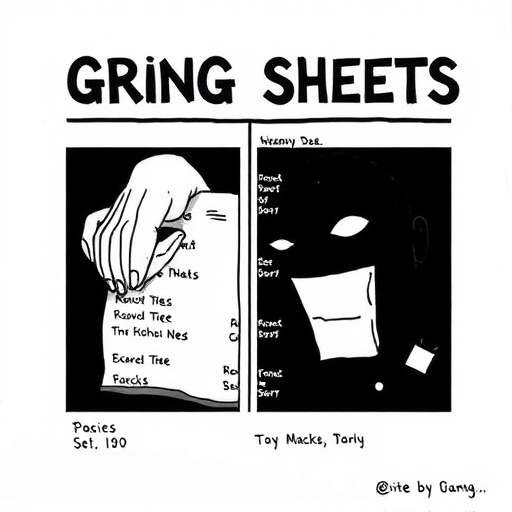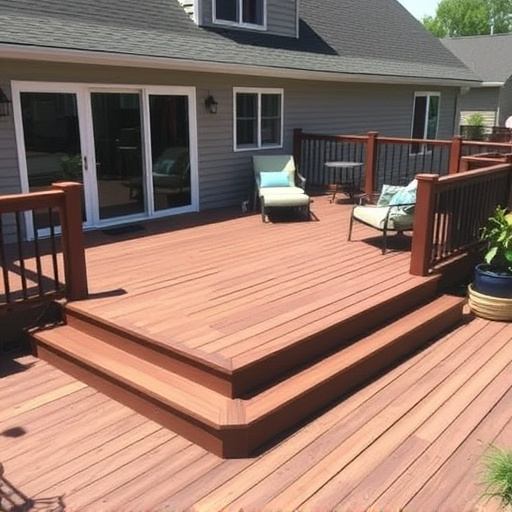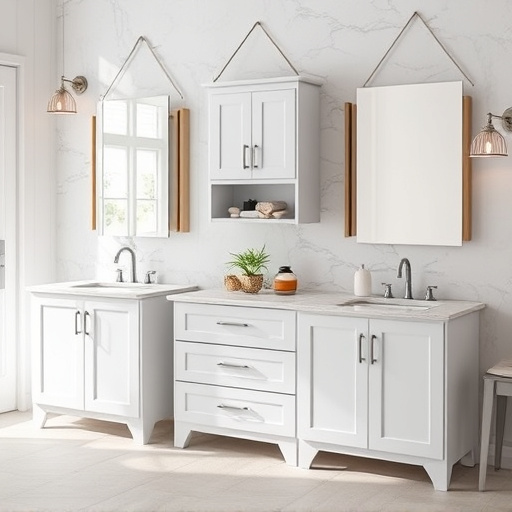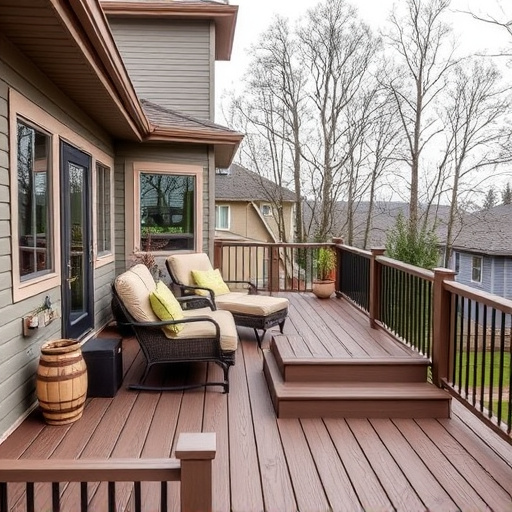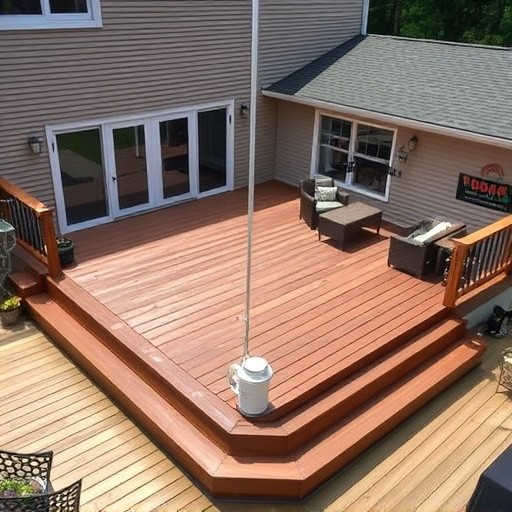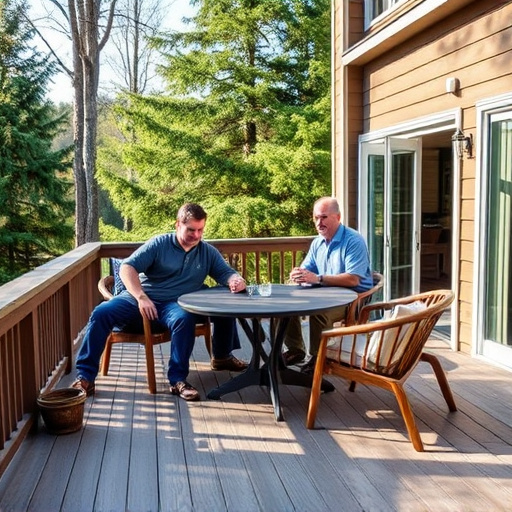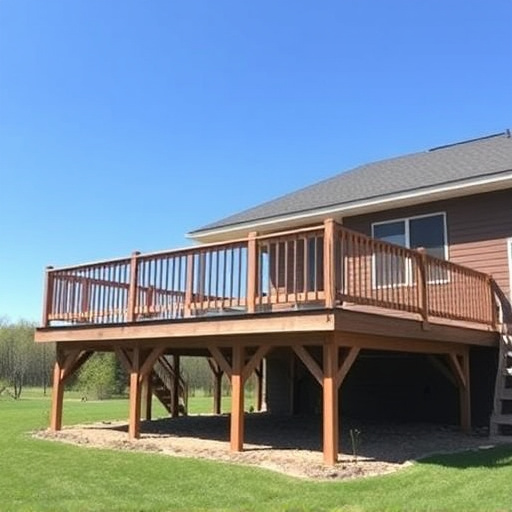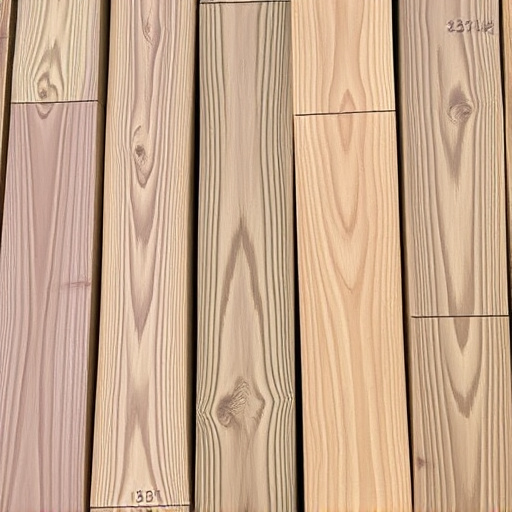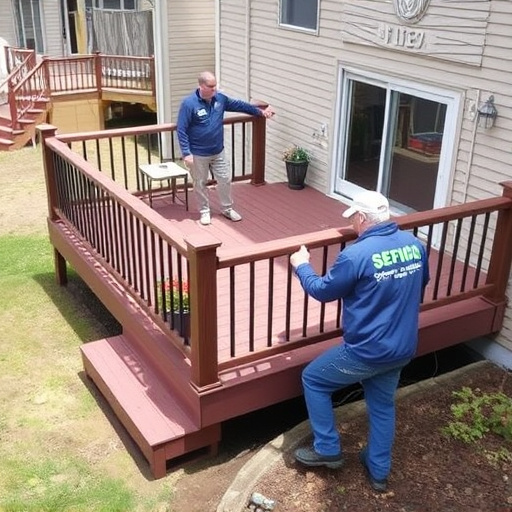Understanding deck material and condition is vital for effective maintenance. Choose between semi-transparent stains preserving grain or transparent sealers for maximum protection against moisture and UV rays. Consider oil-based vs water-based formulas based on durability and environmental impact. Local climate, wood type, use frequency, and nearby structures guide selection for optimal protection.
Maintaining a deck is an essential part of home care, ensuring its longevity and aesthetic appeal. When it comes to keeping your deck in top shape, choosing the right stain or sealer is crucial. This guide will walk you through understanding your deck’s unique needs, exploring various types of stains and sealers, and highlighting critical factors for optimal protection. By the end, you’ll be equipped with the knowledge to make an informed decision for effective deck maintenance.
- Understanding Deck Material and Needs
- Types of Stains and Sealers Explained
- Factors to Consider for Optimal Protection
Understanding Deck Material and Needs
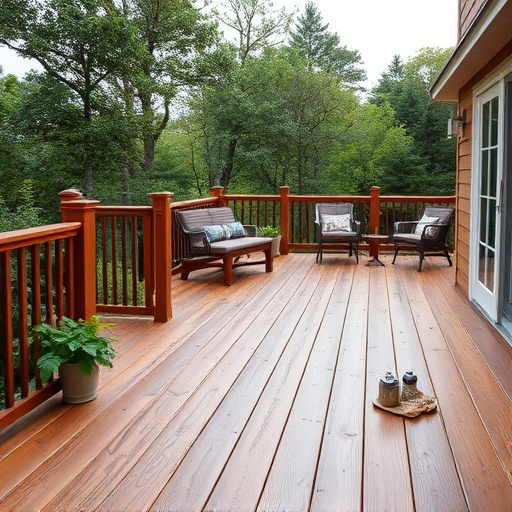
Before selecting a stain or sealer for your deck maintenance routine, it’s crucial to understand the material and unique needs of your decking surface. Different types of wood, composite materials, or even metal decks require specific care to ensure longevity and preserve their aesthetic appeal. For instance, natural wood decks may need a product that enhances their natural grain while offering protection against moisture and UV rays. Composite decks, known for their low maintenance, often benefit from sealers that fill in pores to prevent dirt accumulation.
Additionally, considering the overall condition of your deck is essential. Older decks with worn-out or damaged boards might require more aggressive cleaning and repair before applying a sealer. In contrast, newer decks may only need a light scrub and a topcoat. Home exterior services professionals can guide you in choosing between various stain and sealer options tailored to residential siding replacement or repairs, ensuring your deck maintenance enhances the overall beauty of your home’s exterior.
Types of Stains and Sealers Explained

When it comes to deck maintenance, choosing the right stain or sealer is essential for protecting your wood surface and enhancing its beauty. There are primarily two types to consider: semi-transparent stains and transparent sealers. Semi-transparent stains offer a subtle color enhancement while still allowing some light to pass through, revealing the natural grain of the wood. This option is ideal for those who want to add a touch of color without fully obscuring the deck’s original appearance. On the other hand, transparent sealers create a protective barrier, blocking moisture and UV rays, thus extending the life of your deck. While they don’t alter the color, sealers ensure your wood remains looking its best by preventing fading and rot, especially in residential roofing environments exposed to harsh weather conditions.
Furthermore, understanding the difference between oil-based and water-based formulas is key. Oil-based stains and sealers are known for their rich, deep colors and durability, but they can be more challenging to clean up and may emit strong odors. Water-based products, in contrast, are easier on the environment and user, with quick cleanup and minimal odor, making them a popular choice for those concerned about health and safety, especially during siding installation or repairs.
Factors to Consider for Optimal Protection
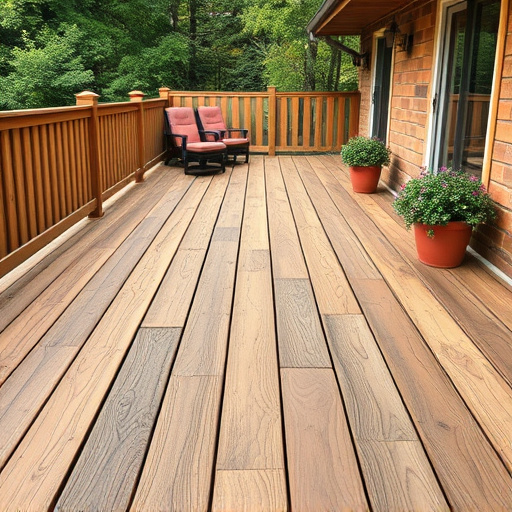
When choosing a stain or sealer for deck maintenance, several factors come into play to ensure optimal protection. First, consider the type of wood on your deck. Different woods require specific care; for instance, cedar and redwood have natural oils that repel water and protect against decay, while pressure-treated wood needs a more robust formula to withstand elements like mold and mildew. The climate you live in is another crucial aspect; regions with high UV exposure necessitate higher SPF protection to prevent fading, while areas with heavy rainfall might require water-repellent stains.
Additionally, think about the deck’s purpose and usage. If it’s a family gathering spot or used for entertaining guests, frequent foot traffic demands a durable finish that can withstand wear and tear. For decks with neighboring structures like siding replacement or roofing and siding, choose products designed to seal gaps and prevent seepage, ensuring long-lasting protection against rot and damage caused by roof repair overspray.
When it comes to maintaining your deck, choosing the right stain or sealer is key. By understanding your deck’s material and needs, considering various types of stains and sealers, and factoring in protection requirements, you can ensure a durable and aesthetically pleasing finish. Regular deck maintenance with the appropriate products will extend the life of your outdoor space, allowing you to enjoy it for years to come.

